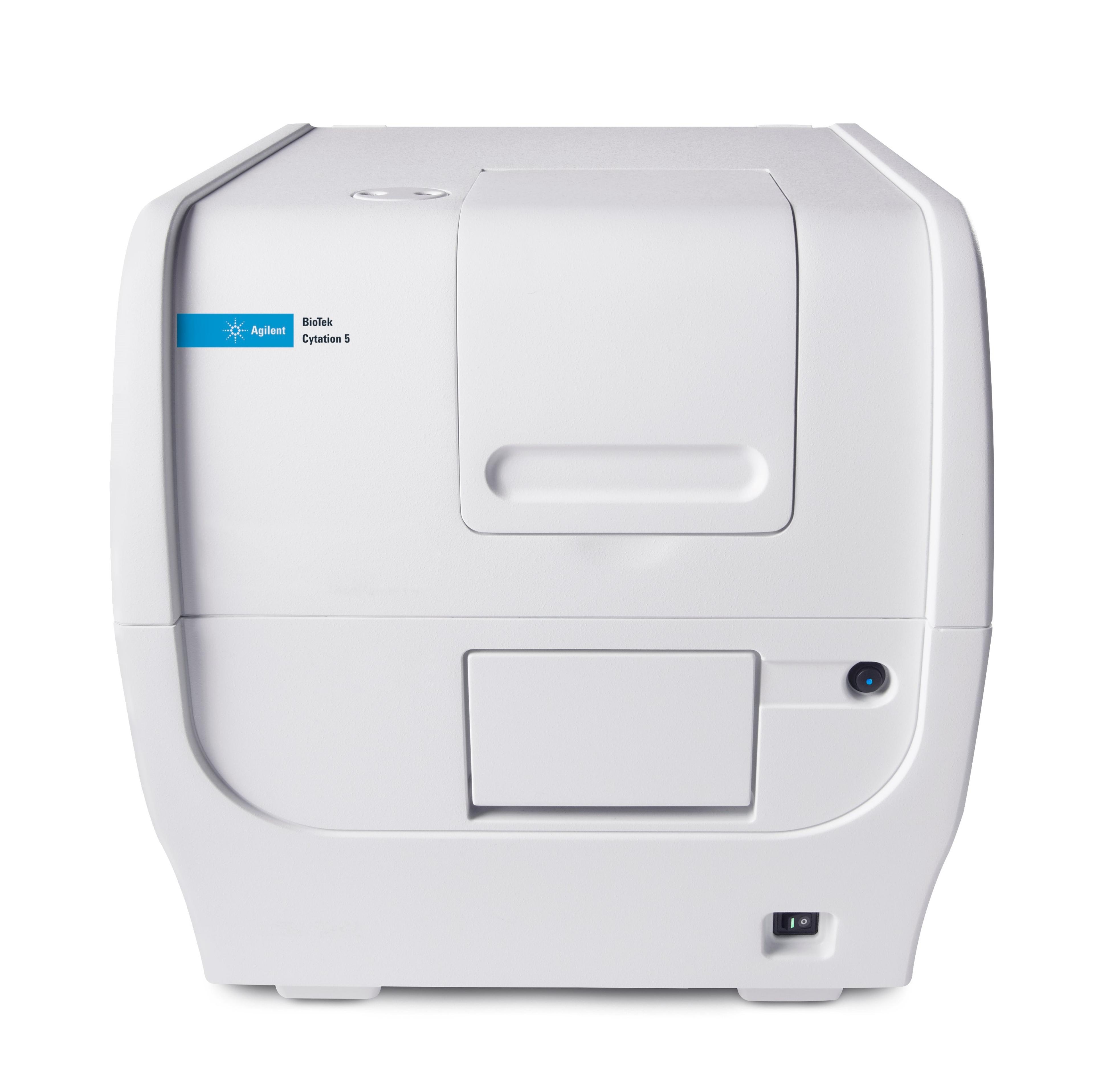The Cytation™ 5 Cell Imaging Multimode Reader: Trends in Phenotypic Screening and Live-Cell Assays: An Interview with Dr. Peter Banks, BioTek
5 Feb 2015
Phenotypic screening using automated digital fluorescence microscopy and microplates is now essential for drug discovery. Dr Michelle Maxwell, Drug Discovery and Development Editor, spoke with Peter Banks, Scientific Director for BioTek, about the new Cytation™ 5 Cell Imaging Multimode Reader and how the advances in technology enable phenotypic and live-cell assays.
Dr Peter Banks is the Scientific Director at BioTek, with a PhD in analytical chemistry and a decade of experience in high content screening (HCS) and automated microscopy.
As Scientific Director, Dr Banks has the necessary domain knowledge and marketing background to assess scientific trends in the marketplace, and using the company‘s own in-house application lab develop applications to suit these trends.
In 2009, a product concept was conceived for an automated digital microscope contained in a microplate reader. This product concept was similar to expensive HCS readers such that cells could be imaged and analyzed using image analysis algorithms, but the product would also provide conventional PMT-based detection of cell population responses in microplates. Furthermore, this added value would come at a fraction of the price of the HCS readers. The BioTek team therefore developed a cell imaging multi-mode reader, called the Cytation 3, which would be of interest to a wide range of end users including microscopists, cell biologists and HCS screeners.
How has the Cytation 5 improved over the previous Cytation?
The new Cytation 5 builds on the widefield, brightfield and fluorescence microscopy capabilities of Cytation 3 with the addition of two imaging modes, phase contrast from label-free imaging and color brightfield for colormetric type staining.
In addition, there has been the addition of a six-stage turret allowing automated selection of six objectives ranging in magnification from 1.25x to 60x. Changes to the image analysis software include the ability to create montages of images and stitch them together into a contiguous image of increased field of view; z-stacking, or creating a series of images at different focal planes, followed by making an in-focus image of the stack using z-projection.
Are there any new applications of this instrument? Are there any research projects it has been used for?
Yes, the Cytation 5 has additional capabilities over the Cytation 3; namely its new application in histology, with the ability to visualize in color. We have used this Cytation 5 imaging mode in conjunction with the BioStack 4, from BioTek, to demonstrate high throughput montage and stitching imaging of stained tissue microarrays. Furthermore, this new technology enables label-free live cell phenotypic assays that quantify cell morphology changes. The phase contrast optics enables this and has been demonstrated in an application studying apoptosis through cell counting. The Cytation 5 is used in this study to investigate cell migration in cancer metastasis, in a cell line stably expressing Green Fluorescent Protein (GFP).
The technology improvements also help with the more trivial cell culture techniques, such as cell counting. Automated cell counting can be performed with the new phase contrast imaging, combined with loading a hemocytometer into the Cytation 5.
What is the future of the Cytation 5? What areas of research are you looking at?
The new areas of research and applications are being finalized but we are currently working on marketing the product with data from scaffold- and spheroid-based 3D cell culture methods involving long term kinetic phenotypic assays.
Phenotypic assays in particular are now a key trend in drug discovery, replacing target-based assays in a growing number of drug discovery programs in both Pharma and Biotech. Yet phenotypic assays provide no information of molecular target of a putative drug necessitating downstream target de-convolution and mechanism of action studies. Often these studies are enabled using cell-based assays performed with a conventional microplate reader using PMT-based optics. It is therefore beneficial to move with these trends and develop a multimode plate reader capable of imaging phenotypic type assays.
The new Cytation 5 will be used in live demos of tumor invasion assays at the BioTek booth #305 at the SLAS2015 show in Washington, D.C.


